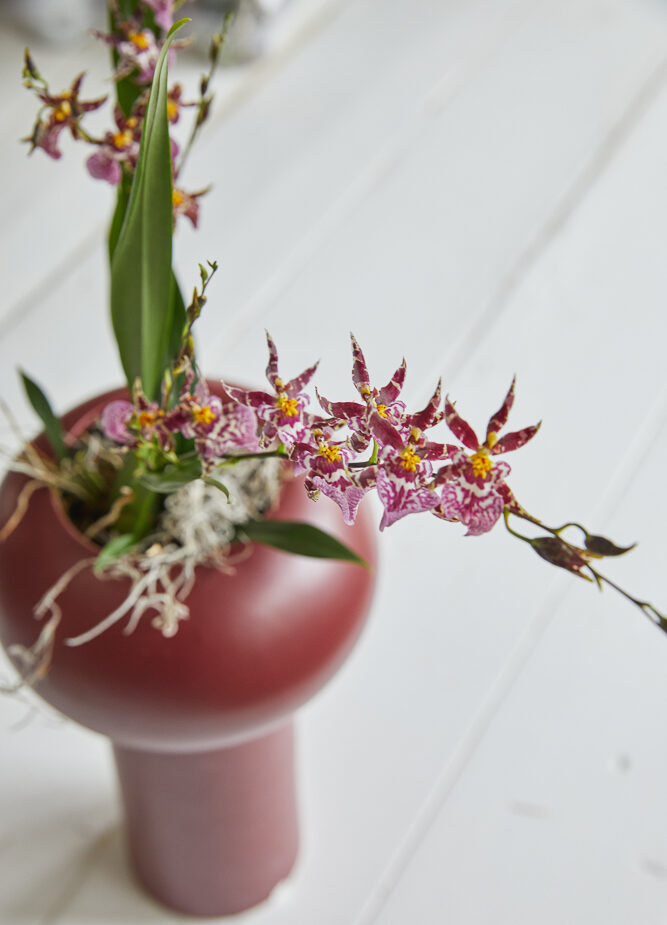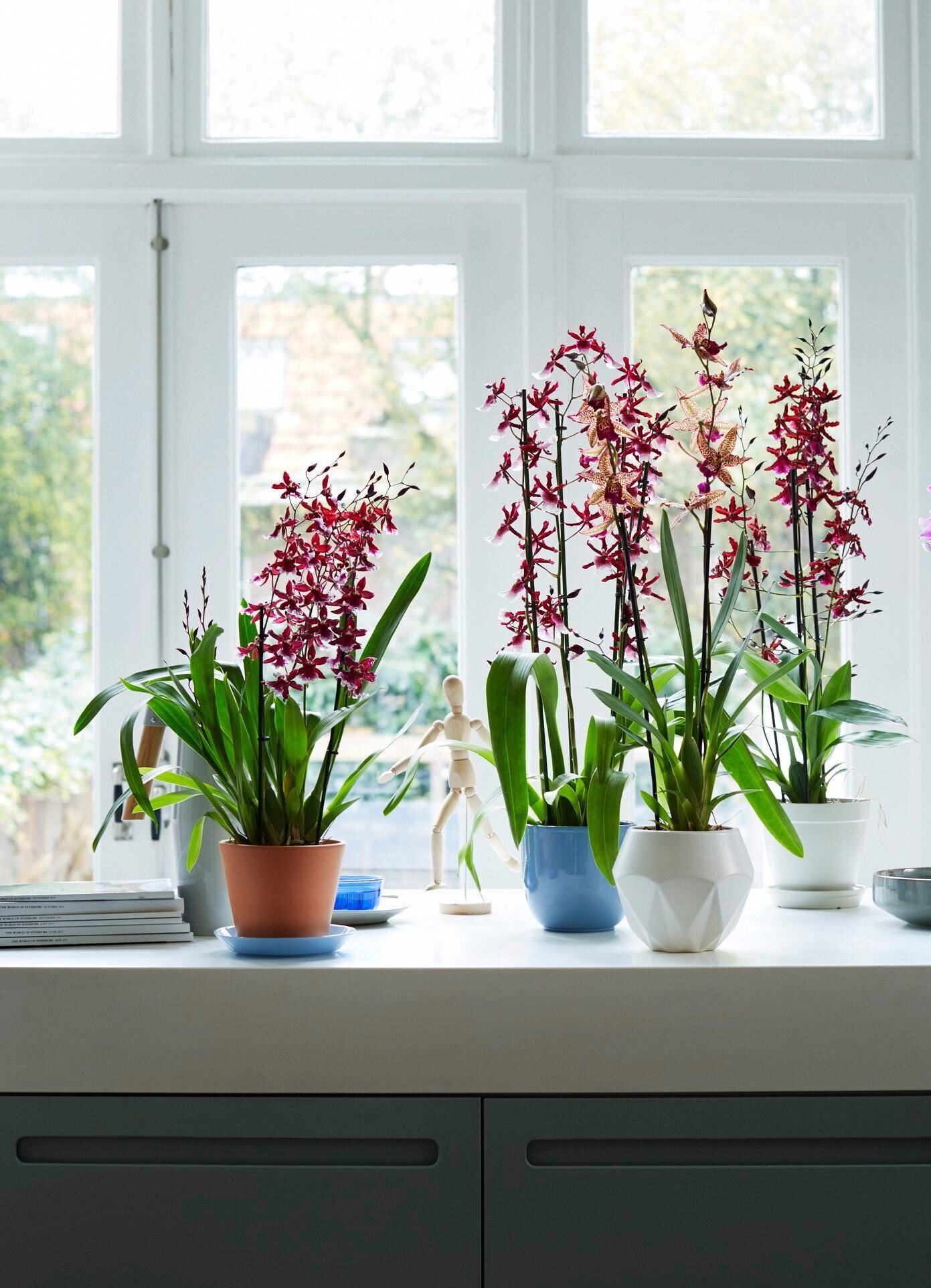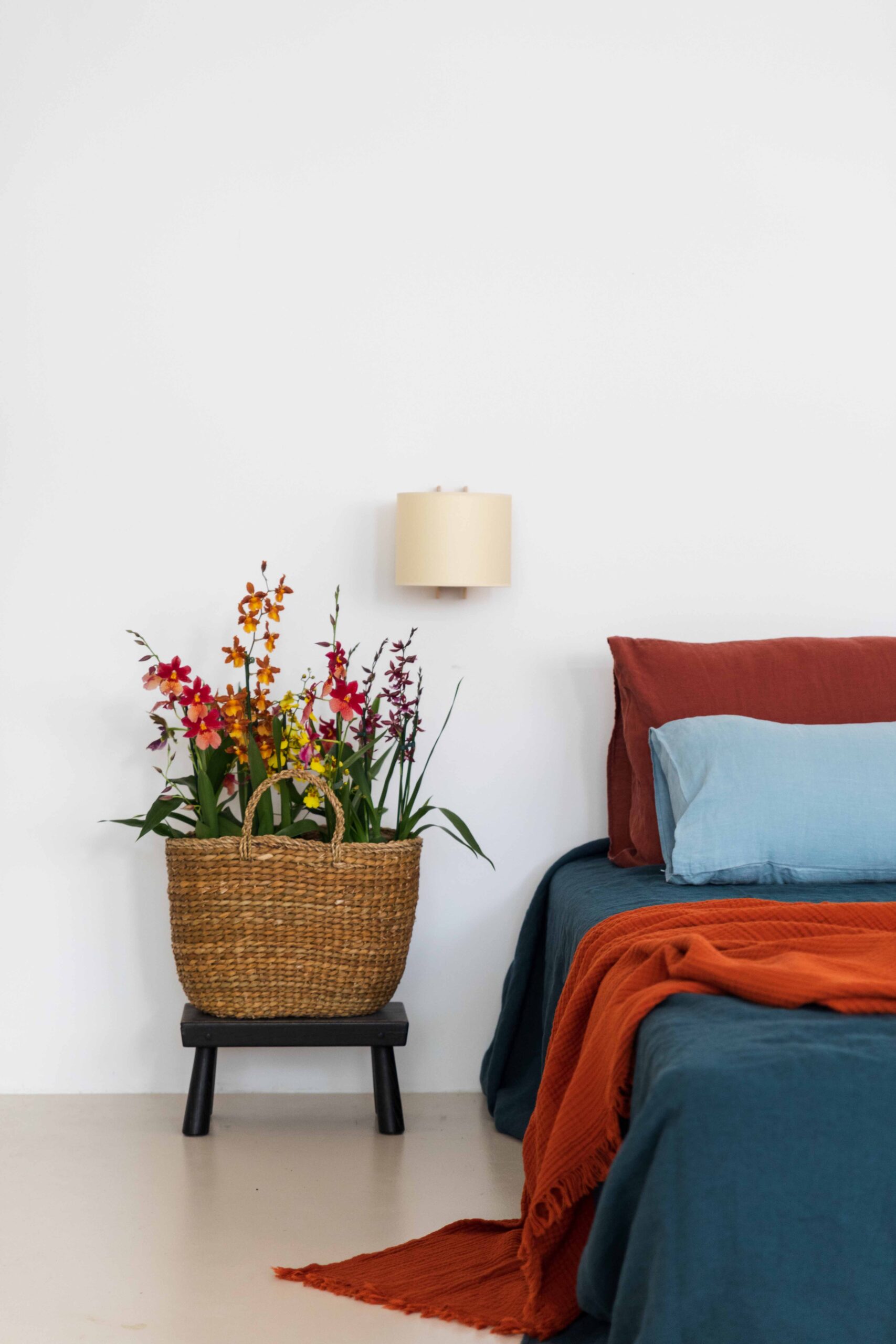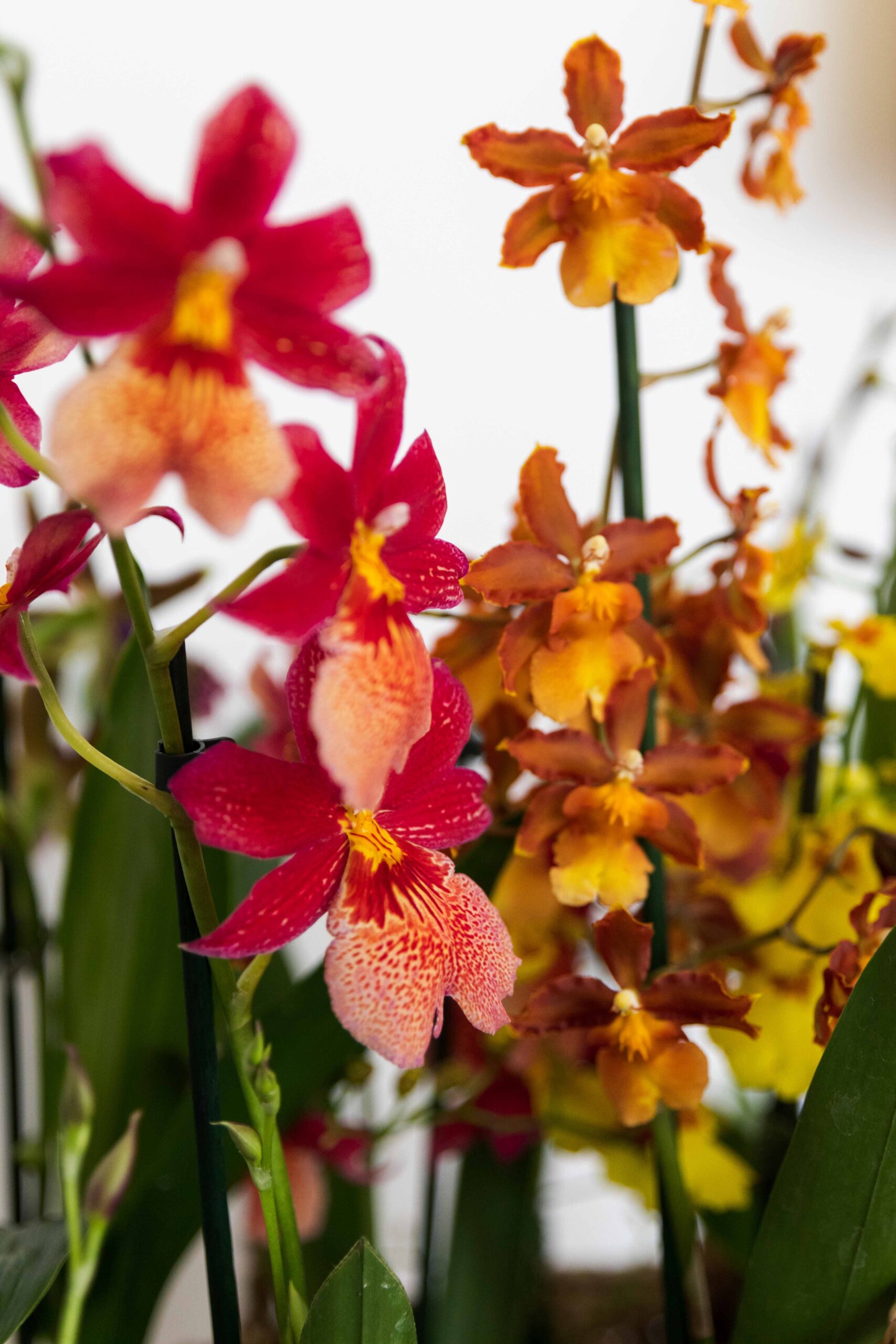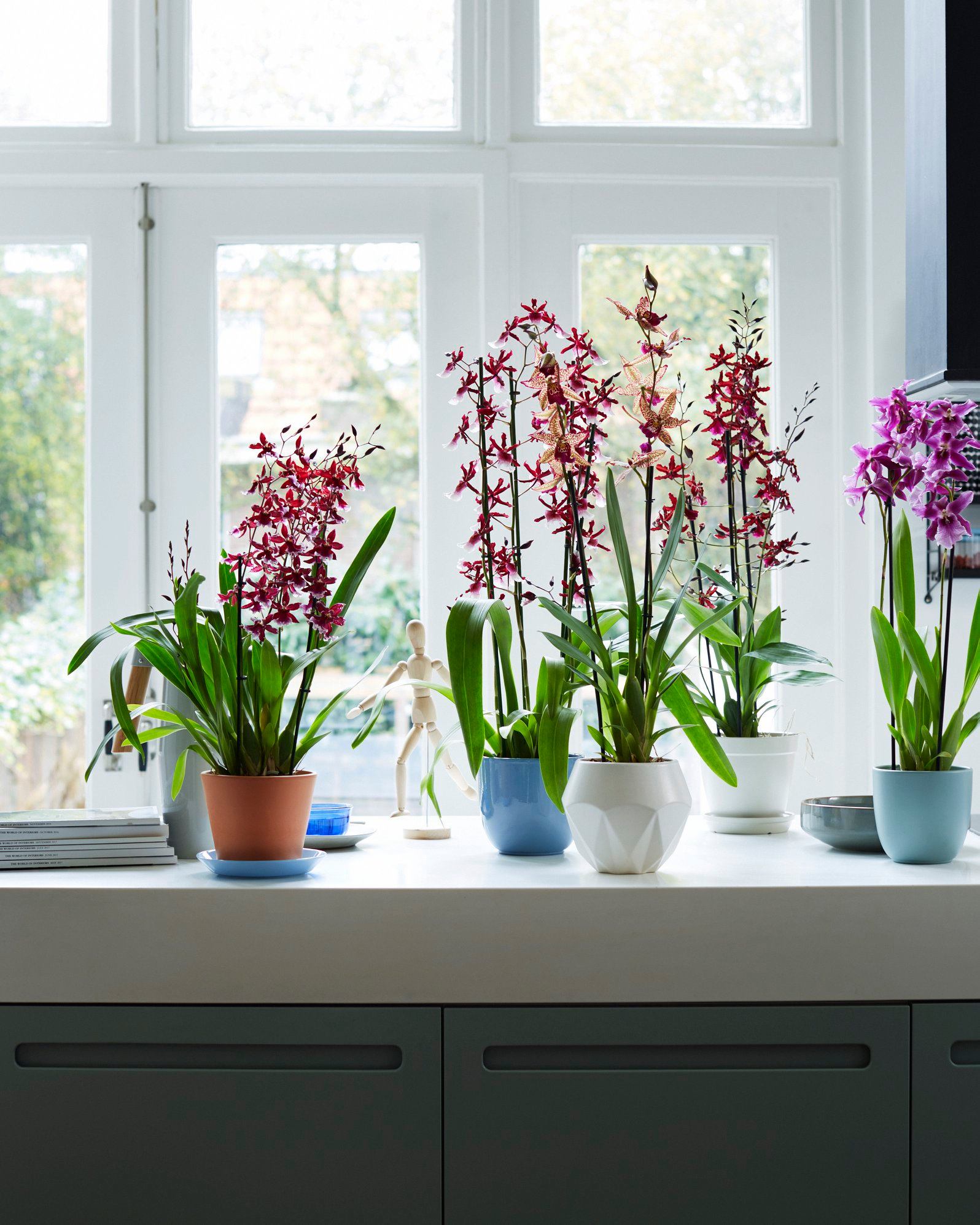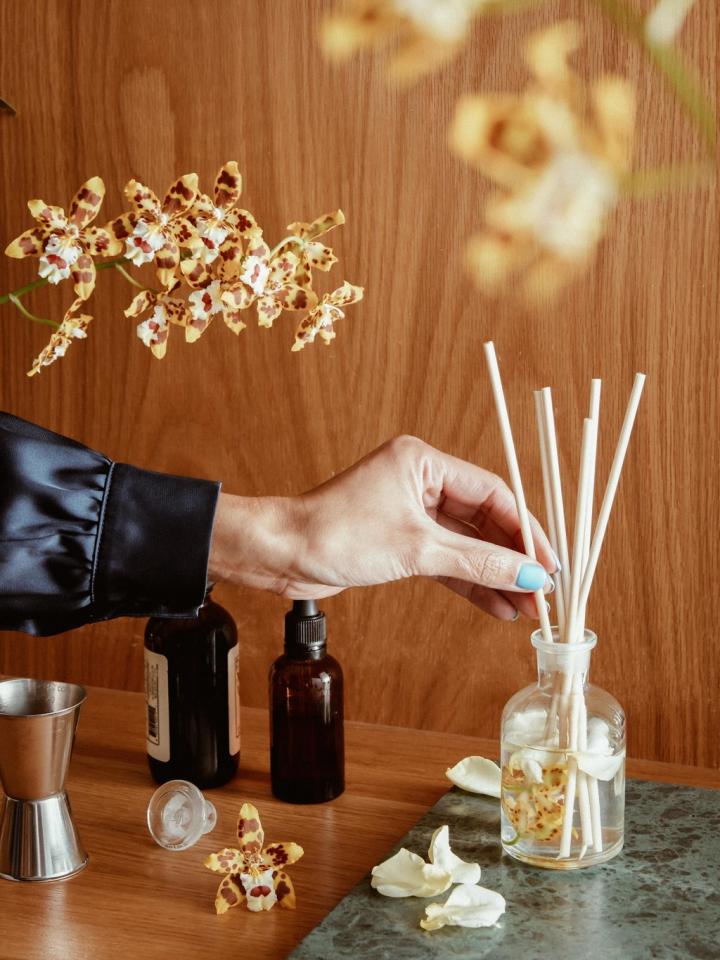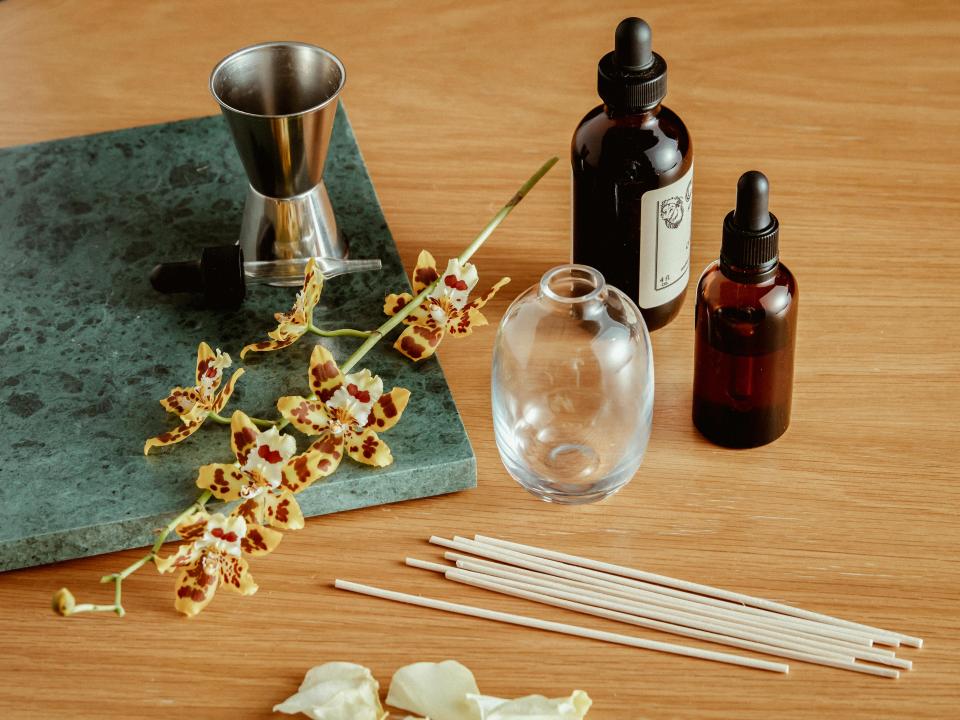DIY room spray with scented orchids
With spring in sight, it’s time for a new, fresh scent in your home. And you can easily make one yourself! In this article, we share step-by-step instructions for a DIY room spray. We are adding scented orchids – not only because they smell nice, but they also look great too!
DIY room spray with scented orchids
- Foto: Cambria
Necessities room spray with scented orchids
- A scented orchid, like Cambria, Miltonia, Phalaenopsis, Dendrobium or Zygopetalum
- 50 ml distilled water
- 50 ml vodka
- 15-30 drops of essential oil of choice
- Vanilla-extract
- Spray bottle
Instructions
Fill the spray bottle with distilled water and alcohol. Add the essential oil and a dash of vanilla extract. Keep playing with the amounts until you’ve found a fragrance that works for you. Shake the bottle carefully to mix everything. Then cut a few flowers from the orchid and place them in the bottle. In the video below we used a fragrant Phalaenopsis, but you can use a Cambria, Miltonia or Zygopetalum too. Twist the cap on, shake it a bit and spray!
@orchidsinfo The orchid makes this home spray smell so good! #diy #roomspray #homespray #orchid #flower #interior #home #flowerscent #huisgeur #huisspray #orchidee #diyroomspray
Do you want to hang on to the scent for longer? Then leave the cap off and place a few wooden sticks in the bottle. The result is homemade fragrance sticks! Place them in a nice spot in your house and enjoy them every time you walk by.

